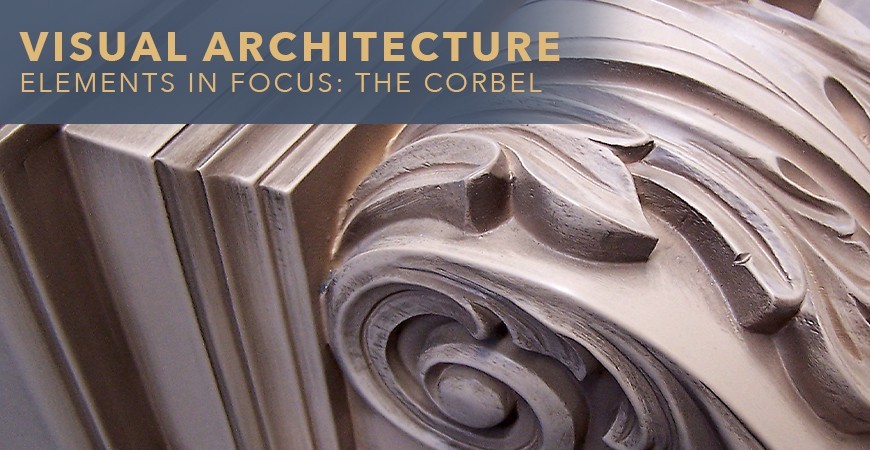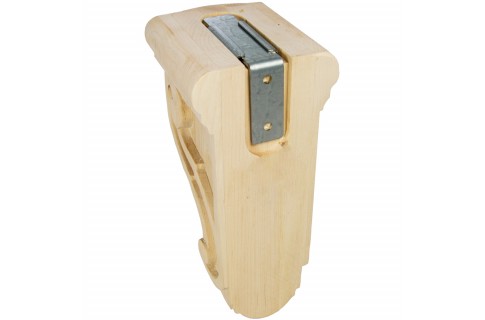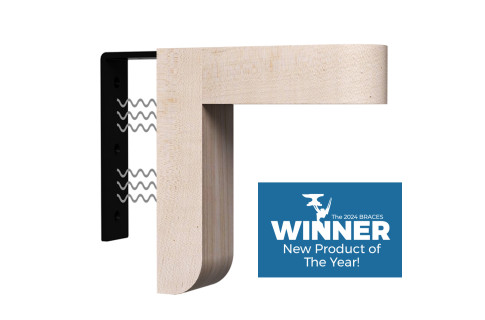Visual Architecture Element in Focus: The Corbel
It’s all in the details, right? As 2021 nears, feel free to create changes with maximum design impact! Take a space from tired and funky, to a fresh and brand new, cohesive meets functional style. One style detail idea that is easy to incorporate? Insert Corbels HERE!. These 90° design structures are utilized as decoration or functional pieces under island bars, shelves, mantels, cabinets, counters, and room dividers. Today’s corbels can have some unexpected features - but first let’s take a glimpse at stops throughout history where corbels got their start.
Corbels date back to Babylonian and Mayan architecture. They were first carved into the stone walls (or cut from stone). These architectural structures supported many buildings with some in more elaborate and complex ways. Corbels were named for their beak-like shape, deriving from the Old French-based Latin word “corvellus,” which means raven. Large, ornate carved corbels were popular in Renaissance architecture roof lines, while smaller decorative corbels were an integral design element in the gingerbread millwork popular in Victorian houses. In fact, it was during the Victorian Era when a new concept was explored: wood corbels. They quickly grew in popularity and were established into many buildings such as cathedrals, libraries, and community buildings.
Corbels are most famous for appearing as gargoyles on the side of churches and cathedrals, namely Notre Dame in Paris. Norman (Romanesque) corbels often have a plain appearance, although they may be elaborately carved with stylized heads of humans, animals or imaginary "beasts", and sometimes with other motifs. The corbels carrying balconies in Italy and France were sometimes of great size and richly carved, and some of the finest examples of the Italian "Cinquecento" (16th century) style are found in them. Throughout England, in half-timber work, wooden corbels abound, carrying window-sills or oriel windows in wood, which also are often carved. Of particular note are Maes Howe, a Neolithic chambered cairn in Scotland and Gallarus Oratory, an early Christian church in Ireland, both built with corbel vaulting.
Historical corbels continue to ensure the stability and good-looks for countless buildings across the globe. Having survived the centuries, these corbels have played a significant role in the architectural realm we’ve come to know today.
So, what can modern day corbels do for your space? We are here to help! Federal Brace is thrilled to introduce our newest reinforced wood corbels. The Lincroft Wood Corbel and the Cumberand Wood Corbel join our comprehensive wood corbel design collection and continue to add new versatility to the corbels of yesteryear. Our latest designs are sleek, low profile -- with steel rib support hidden under each of their beautiful wood surfaces -- to improve each corbel’s weight bearing function. Best of all, installation is a breeze! Our full line of Made In the U.S.A., secure wood corbels with rib mounts are in stock and ready to ship! Check out www.FederalBrace.com or call toll-free (877) 353-8899, 8:30 AM - 5 PM EST for additional ideas and design assistance.




